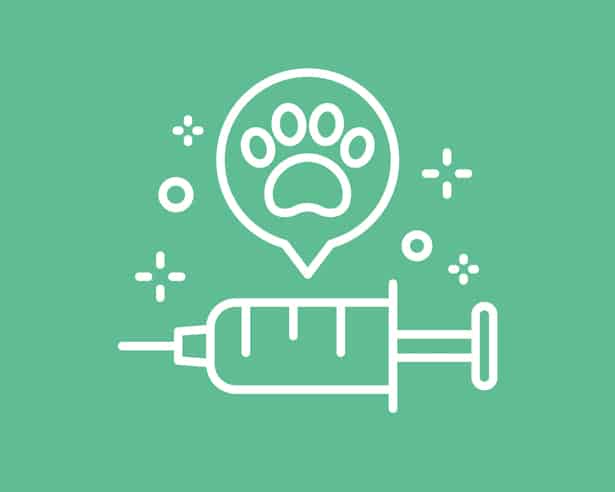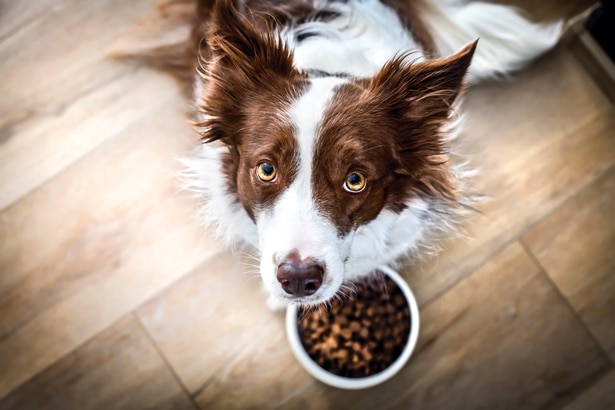

Longevity Secrets
Tips, tricks, and health hacks to maximize your dog's lifespan
No matter how long our dogs live, for most of us, it’s simply not enough time. Fortunately, there are things we can do to prolong our time together.
Canine geneticists have found that 20 percent of degenerative diseases may have a genetic component or predisposition, says wellness veterinarian Dr. Karen Becker. That means 80 percent of the chronic, non-infectious diseases in dogs are lifestyle or environment-related—and therefore “potentially within the realm of our control.”
In essence, it’s all about prevention, says Dr. Becker, a faculty member of the College of Integrative Veterinary Therapies and Arizona-based YouTube creator. Keeping animals healthy is much easier and more successful than treating disease and illness down the road—“not to mention our animals feel better in their bodies as they go through life thriving, not degenerating.”
Modern Dog spoke with five experts working in different areas of dog health for easy, proactive things you can do to maximize your dog’s health span.
#1. Promote Good Gut Health
Science has confirmed it—nutritional diversity is critically important. Eating the same food over and over, or only ultra-processed food, is a recipe for disease.
This is due, in large part, to the incredible role gastrointestinal (GI) health has on overall health. The good news? Small tweaks to your dog’s diet can make a big difference.
Prebiotics and probiotics used to be big words for average dog owners, but research and supplementation have increased in the last decade, says Dr. Becker, the co-author of Real Food for Healthy Pets (2009) and The Forever Dog (2021).
The less familiar “prebiotics” are a type of fibre found in fruits and vegetables that serve as fermentable food sources for beneficial “probiotic” bacteria and other microbes in a dog’s gastrointestinal (GI) tract.
A dog’s GI health is important to long-term well-being, with more than 70 percent of a dog’s first line of defense—their immune system—located along the GI tract. GI imbalances lead to inflammation of the intestinal lining, which often results in a condition known as dysbiosis or leaky gut, says Dr. Becker. “The more scientists study gut bacteria, the more they learn about how vitally important this ecosystem of microorganisms is to just about every facet of overall health, wellness, and even behaviour.”
Some of the most common reasons for chronic GI problems (vomiting, loose stools, diarrhea, gas, bloating, constipation, irritable bowel syndrome, and inflammatory bowel disease) are food intolerances, malabsorption, maldigestion, small intestinal bacterial overgrowth, and pancreas and gallbladder dysfunction.
“Eating the same food over and over, or only ultra-processed food, is a recipe for disease.”
Although both pre- and probiotics can also be given as dietary supplements, Dr. Becker recommends pet parents feed a variety of real prebiotic foods in conjunction with a fresh, wholesome diet made with human-grade ingredients to build gut health. “Our dog’s bodies have evolved to know exactly what to do with real food,” she says.
All fresh produce contains beneficial fibres that nourish the enteric ecosystem. Prebiotic fibres are naturally found in foods including bananas (the greener the better), asparagus, broccoli, okra, Jerusalem artichokes, and leafy greens (like endive). One of the best sources of prebiotic fibre are free: puree or chop unsprayed dandelion greens from the backyard and mix them with a dog’s meal.
Cultured foods like plain kefir and plain yogurt (organic, if possible) naturally contain helpful probiotics, which can help populate the gut with beneficial microorganisms that enhance digestion, nutrient absorption, and immune function—all factors for longevity.
To feed, pet owners can add one teaspoon of kefir or yogurt per 10 pounds of body weight to a dog’s food or freeze it in an ice cube tray as a treat.

Photo Denise/Adobe Stock
^ Add one teaspoon of plain, unsweetened kefir or yogurt per 10 pounds of body weight to a dog’s food or freeze in an ice cube tray as a treat.
Fermented veggies are loaded with probiotics and are easy to make at home or can also be found at most grocery stores.
Take it slow, Dr. Becker advises. “A dog that has consumed the exact same type of commercial dog food for months or years lacks microbial and nutritional diversity and needs time for its biome to adjust.”
#2. Clean Your Dog’s Teeth

Photo New Africa/Bigstock
Oral health plays a crucial role in promoting longevity in people and pets alike, making periodontal (gum) disease management a top priority, says Dr. James Anthony, DVM, MRCVS, FAVD, DEVDC and board-certified veterinary dentist with more than 35 years of expertise in the field.
“If you’re looking for a natural toothpaste alternative, consider using coconut oil.”
“While managing tartar and plaque is helpful, addressing gum disease is crucial for your pet’s oral health and overall well-being,” says Dr. Anthony. Periodontal disease leads to swelling and damage to the gums and supporting structures of the teeth. Chronic inflammation produces byproducts that spread throughout the body, contributing to various age-related diseases such as arthritis, and heart, kidney, and liver disease.
Veterinarians have not sufficiently emphasized to pet owners the importance of a daily home care routine, which is key to preventing the need for professional cleanings and maintaining a healthy animal, says Dr. Anthony.
To effectively control plaque and inflammation, pet owners should brush their dog’s teeth daily, but Dr. Anthony says only four to five percent actually do. Dr. Anthony recommends a child’s toothbrush for small dogs or an adult soft bristle for medium to large pets, and pet toothpaste, as human toothpaste contains chemicals that may cause stomach upset when swallowed.
If you’re looking for a natural toothpaste alternative, consider using coconut oil. Coconut oil is safe for dogs to consume and may help decrease plaque and tartar build-up on their teeth and reduce inflammation to fight gum disease. In one study, oil pulling (swishing oil around the mouth) with coconut oil for 30 days significantly decreased plaque buildup and signs of gingivitis in 60 human participants with plaque-induced gum disease. To use coconut oil to brush your dog’s teeth, simply rub a small amount of coconut oil onto their teeth and gums.
In addition to brushing, chew toys, dental treats, and water additives, such as Oxyfresh Pet Dental Water Additive, that reduce plaque and tartar can help.
Dr. Anthony also recommends 1-TDC, a specialized fatty acid which promotes healthy inflammatory responses, to minimize plaque buildup. He serves as the chief medical officer for Elite Science, the makers of 1-TDC, and says the supplement is palatable and cost-effective—superior to coconut oil, which has milder anti-inflammatory properties.
Dental diets—to be fed exclusively or used as treats—approved by the Vet Oral Health Council (VOHC) are also beneficial, Dr. Anthony says. The size, shape, and texture of the kibble is designed to clean the tooth as your dog chews, minimizing the need for additional dental procedures.
Pet owners who practice consistent oral home care with their dogs may avoid the need for professional cleanings, but, if needed, should be done under general anesthesia. Non-anesthesia procedures, says Dr. Anthony, do not effectively reach below the gumline, the area where periodontal disease starts. “Anesthesia ensures the procedure can be safely performed.”
Although anesthesia itself is a risk (which can be mitigated by pre-procedure blood work and a thorough examination) it is “outweighed,” says Anthony, “by the benefits of professional cleanings when performed by an anesthesiologist.”
#3. Titer Testing

Photo nexusby/Bigstock
Vaccines are important but are not without risk. Immunologist Dr. Laurie Larson, DVM, calls herself “a strong proponent of using an evidence-based approach to vaccinate our dogs appropriately.” In essence, titer testing involves ascertaining your dog’s immune response before giving a vaccine to see if the booster shot is, in fact, needed.
“An unexpected vaccine reaction can come with a very large price tag,” says Dr. Larson, an instructor of veterinary immunology and titer expert at the University of Wisconsin-Madison’s School of Veterinary Medicine and director of the Companion Animal Vaccines and Immunodiagnostic Service (CAVIDS) laboratory — titer testing service. “Appropriate vaccination—giving vaccines based on potential benefit—ensures immunity without undue risk of adverse vaccine reaction.”
Many pet owners—and even some veterinarians—are unfamiliar with titer testing, a measurement of a specific antibody. The goal of vaccination is to immunize by inducing antibodies above protective thresholds. Once a dog is immune, both disease virus and vaccine virus are locked out. More doses of vaccine provide no further benefit.
“We need to consider that anytime we put a vaccine into an animal, things can go wrong,” says Larson. “It is true that adverse vaccine reactions are not common, but we can’t predict in advance which dogs are predisposed to bad reactions. When the benefit side of the equation is zero, even a small risk is not worth taking.”
“An unexpected vaccine reaction can come with a very large price tag.”
To be done every three years in adult dogs, titer testing is an effective evidence-based tool to help veterinarians determine which dogs would benefit from vaccination and provide peace of mind to guardians of dogs that don’t need a dose at that time. “Appropriately vaccinating dogs… will help to protect them from deadly core viral diseases,” says Larson. “Appropriately refraining from vaccinating dogs that are already immune will protect them from unnecessary adverse vaccine reactions.”
If a titer test finds immunity, vaccines for core canine vaccines—parvovirus, distemper, and adenovirus—can be delayed. A titer test doesn’t apply in cases of non-core vaccines, including rabies, as most areas will not accept a titer test in lieu of a vaccination certificate due to the seriousness of the disease.
#4. A Wholesome Non-Processed Diet (Including Raw Bones)

Photo Milan/Adobe Stock
A wholesome diet can make a big difference to overall well-being, says Dr. Peter Dobias, an integrative veterinarian focused on empowering people with knowledge to prevent disease in their dogs. A better diet equals better health, whether in humans or pets. This means a menu that closely mirrors what dogs’ wild counterparts naturally eat—prey animals, a combination of meat, organs, bones, and small amounts of plants and fruit. Dr. Dobias generally does not recommend dry food. “Any food that is heavily processed and sits on the shelves for weeks, months, and sometimes years doesn’t belong in a dog’s bowl.”
“A better diet equals better health, whether in humans or pets.”
Dobias advises making the switch over several days by mixing a cooked meal with the current pet food; then serving only cooked foods; and finally, introducing raw food. The advantages of feeding a raw or fresh diet include improved coat quality, increased energy and mobility, reduced instances of obesity, diabetes, liver disease and kidney failure, and other degenerative diseases.
The best benefit is a longer life—Dobias estimates that a fresh food diet can extend a pet’s lifespan by at least 20 percent.
He also recommends supplementing with raw bones (refrain from feeding cooked or smoked bones), which are a source of minerals and other nutrients and helps with dental health and in turn, heart, kidney, and digestive health.
Although feeding raw bones does come with a few simple rules (feed bones under supervision, store bones in the fridge between chewing sessions and toss after two days), many people forget that the canine digestive tract is designed to digest bones, says Dr. Dobias. “The strong stomach acids dissolve them in the stomach so they can safely pass through the gut.” The best bones are the ones a dog can crunch. Avoid large marrow bones, especially for large dogs, as they’re too hard and often fracture a dog’s teeth.
On rare occasions, dogs may struggle to digest bones and experience vomiting or diarrhea, which can be due to advanced age, weaker digestion, allergies, or dental issues that make chewing difficult. To give a dog time to adjust, build up digestive acids and enzymes, Dr. Dobias recommends feeding raw meat mixed with ground bones and trying bones from different animals.
“A switch to fresh and raw food can make a world of difference at any stage of a dog’s life,” says Dr. Dobias. “Even for dogs in a terminal stage, I’ve seen dramatic improvements once they start receiving wholesome foods. Food is the greatest medicine. By making this change, you’re highly likely to gift yourself some extra time with your canine friend.”
This article originally appeared in the award-winning Modern Dog magazine. Subscribe today!
Join the newsletter and never miss out on dog content again!
"*" indicates required fields
By clicking the arrow, you agree to our web Terms of Use and Privacy & Cookie Policy. Easy unsubscribe links are provided in every email.





